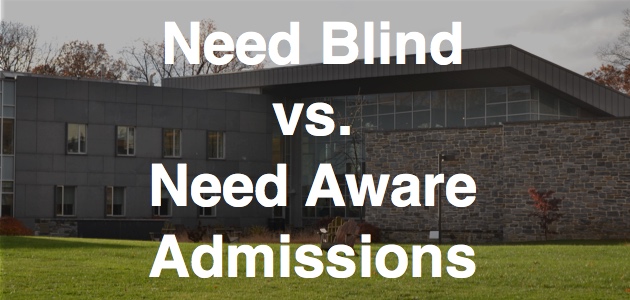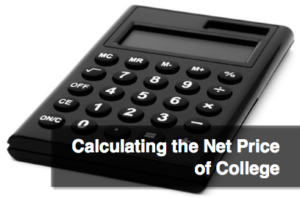 The ever-rising cost of higher education is usually discussed in terms of the impact on students and their parents. There is, however, another side to this: the effects on colleges and universities. Until the 1980s and ’90s, schools typically received enough funding from outside sources to keep tuition per credit hour relatively low, and there weren’t as many add-on fees as seen today. For example, the University of California System, founded in 1868, didn’t charge tuition for in-state residents until the 1970s.
The ever-rising cost of higher education is usually discussed in terms of the impact on students and their parents. There is, however, another side to this: the effects on colleges and universities. Until the 1980s and ’90s, schools typically received enough funding from outside sources to keep tuition per credit hour relatively low, and there weren’t as many add-on fees as seen today. For example, the University of California System, founded in 1868, didn’t charge tuition for in-state residents until the 1970s.
Those days are long gone.
Now, to generate necessary operating revenue, almost all colleges and universities consider prospective students’ ability to pay for their educations when determining admission.
Need-Blind Admissions and Full-Need Financial Aid
Need-blind admissions don’t factor in an applicant’s ability to pay — determined via the Free Application for Federal Student Aid — as part of the selection process. In theory, this means there is a level playing field for students who can pay for their entire education — generating a positive impact on a school’s bottom line — and those who will need aid. In reality, this can be problematic if there is not enough financial aid available so a student can afford to attend if admitted. Therefore, even when submitting a need-blind application, it’s important to do research to see how much financial aid is available as that will vary from school to school.
There are a handful of schools which are need-blind and offer full-need financial aid. These schools tend to be highly selective. Amherst College, for example, admits less than one in five applicants. Other schools that are currently need-blind and offer full-need financial aid include these sixteen colleges:
Barnard College
Bowdoin College
Claremont McKenna College
Davidson College
Grinnell College
Hamilton College
Harvey Mudd College
Haverford College
Kenyon College
Middlebury College
Pomona College
Swarthmore College
Thomas Aquinas College
Vassar College
Wellesley College
Williams College
 Need-Aware and Financial Aid
Need-Aware and Financial Aid
Most colleges and universities will consider a student’s ability to pay, which can lead to tough decisions. In 2009 at Reed College, for example, too many students requiring financial aid were admitted so one hundred were dropped before acceptance letters were sent out and were replaced by students who could afford to pay all of their tuition.
Being need-aware, however, does not automatically exclude a school from providing full-need aid. Some schools—such as these three-dozen liberal arts colleges that meet full financial need for students – do so with scholarships, grants, work study positions, and/or student loans.
Calculating Net Cost
It’s important to remember the sticker price to attend a school is rarely the net price in the final analysis, and the ability to pay the difference in cost versus aid available will be factored in differently depending on the school. Therefore, questions to answer about prospective schools to determine their financial aid philosophies include:
- What percentage of applications are evaluated on need-awareness?
- What percentage of students are on need-based financial aid?
- What is the average scholarship award?
- What is the average post-graduation debt?
It’s also key to know the amount of money a school will expect you to contribute. A handy resource is the College Board’s Expected Family Contribution (EFC) Calculator. While this doesn’t calculate net price, it will give you an approximate figure about how schools will view your financial situation.
 After figuring out your EFC, the US Department of Education’s Net Price Calculator Center provides links to the financial aid page at every US college and university. This allows parents and students to input their financial information and, based on a school’s tuition in conjunction with aid typically available, determine the net cost. It’s important to note this number will be an estimate, as the exact cost is almost always different based on current tuition rates, individual scholarship awards, and updated federal student loan guidelines.
After figuring out your EFC, the US Department of Education’s Net Price Calculator Center provides links to the financial aid page at every US college and university. This allows parents and students to input their financial information and, based on a school’s tuition in conjunction with aid typically available, determine the net cost. It’s important to note this number will be an estimate, as the exact cost is almost always different based on current tuition rates, individual scholarship awards, and updated federal student loan guidelines.
It’s harsh, but true: While admission to a college or university will not be based solely on the ability to pay, at times schools will let in less-worthy students because of their ability to cover full tuition costs. That’s why it’s important to understand the concepts of need-blind, full-need financial aid, and need-aware admissions.
A college can have a need-blind admissions policy and meet full need of student families, or they could be need-blind but not commit to meeting the full financial need of students. They can also be need-aware and pledge to meet full financial need with a combination of scholarships, grants and student loans. Once you have a handle on these definitions, carefully determine what you can pay and what a school is likely to contribute, then you can make the best college choice for your particular situation.
